Photo: Kit Houghton
Rebecca Ashton meets Valegro and interviews the world’s nicest dressage rider…
I’m making sandwiches with Carl Hester.
“You have to try this butter. It’s amazing,” Carl says, handing me the bright, yellow delicacy only available from his homeland, Sark. “Or as it’s often referred to, six hundred alcoholics clinging to a rock,” he offers.
I’ve known the Olympic gold medallist for approximately ten minutes and straight away I can tell this is going to be a cool interview. It’s been about eight months since his London Olympic success and I want to know what he’s been up to and what’s next for the star…
You’ve recovered from the Olympics?
“I must say last year, whatever a nervous breakdown felt like, I was having one. Oh god, it was just horrific. I don’t know what that was; before and after the Olympics, I hated it. Terrible Muriel! [this in his best Aussie accent] I was just shattered, shocked, worried, so much resting on our shoulders. Thank god Charlotte was really good through it. She stayed pretty upright through the whole thing. And I couldn’t let her know what I was feeling.”
“I had had a bad preparation for the Games. I hadn’t had the time to put into Uthopia, he was too fat and then he pulled a shoe off just before Hagen and went lame and then I had to deal with everyone saying, ‘He’s lame! He’s lame! He’s done a tendon!’ You get all of this added pressure because people assume that you’re just covering up but I wasn’t,
it was actually the truth.”
“I just got into this awful mindset, is my horse going to go lame? Is Charlotte’s horse going to go lame? Is Laura’s horse going to go lame? Every day I was just panicking. Anything that could go wrong was always flashing through my head because I realised how important it was for our country – let alone myself or Charlotte or Laura. And I just couldn’t bear to think that this one opportunity in our life would escape. That’s what it was, I’m sure.”
“No… I can’t say it was an enjoyable time. Obviously, looking back now, it was amazing. I enjoy it now but not then.”
Sports psychology help?
“I don’t do sports psychology, no. I have done it in the past, but it doesn’t work for me. I’m much better left alone just to fester away. I just tuck myself away, I smoke and drink for a night, feel shocking the next day and off I go. I like to do it like that. I left home at 15, I like that sort of independent brain thing of ‘I’ll sort it out’.”
And your up-and-coming horses?
“Dances With Wolves is really going to be my next one. He is a top horse but he is still very nervous and temperamental. I have to be very tactful with him and train him in the right way. Like Escapado. It’s a full time job having a horse like that.”
“Fine Time, I’m riding for a client who’s pregnant. Don’t hang around me, that’s what happens. I’ve picked up a few good rides like that. If I like your horse, you’re going to get pregnant! He has a very secure temperament. He has come to Grand Prix quickly. Some horses can be spoilt if you go too quickly and some can relish the challenge. He received 71% in his first Grand Prix.”
Dances With Wolves (Photo: Rui Godinho)
Tell us about Dances With Wolves.
“He’s such a cool horse and it’s such a cool story. He was owned by Jane Gregory, a friend of mine who died. She had a heart attack, which is really tragic.”
“Jane and I used to talk about this horse and she was like, ‘He’s so strong; he’s so hot headed but I’m sure he’s brilliant, but I just struggle with him because he is enormous.’ She was right. He’s the biggest horse in our yard and he is VAST. When he’s strong, he is strong. It doesn’t feel like dressage anymore, it’s like waterskiing. You know, it’s just GO!” [Carl is laughing, in case you’ve missed the point, Carl laughs, a lot.]
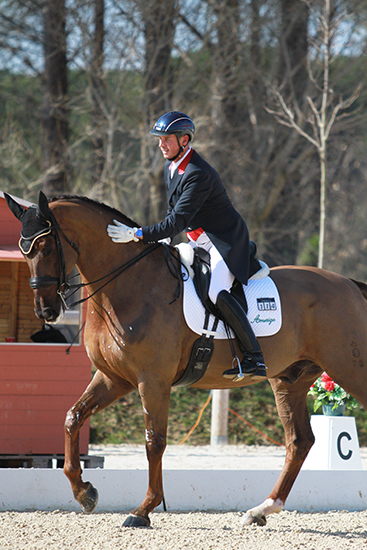 Dances With Wolves (Photo: Rui Godinho)
Dances With Wolves (Photo: Rui Godinho)
“He has done a lot for my body, I tell you! Jane said to me when we were in the Maldives on holidays the year she died, ‘Carl if I can’t ride it, you’ll have to ride it.’ And I thought, ‘Jane, you’ll never let me ride it because you’ll never give up’.”
“So it was so sad because I did get to ride it but not how I wanted to. But the nice thing is, for her friends and myself and her husband, every time he does something great it’s really good because we have a good memory about Jane and it keeps it really alive – so it’s a good story for us really.”
“I didn’t think I would bond with it. The first six months it was here I thought well I can’t ride it. I just can’t ride it. What am I going to do? How am I going to tell Jane’s husband I can’t ride it and I can’t get on with him?”
“I expect my horses here to fit in and they all hack on a Wednesday; they all hack on a Saturday. They all get cantered around the field and they all get turned out. And of course I think they were so worried when he came here, they said, “Don’t hack him out; don’t ride him on the grass whatever you do, he’ll run off.”
“Three days later I thought, you know what? This horse has just got to fit in with everything else. I’m not going to make concessions for him. So we’ve been through hedges out hacking; he’s done it all, but he’s come out the other side. He has to be a normal horse if he’s going to cope with the pressures of competing, I think.”
What is happening with Uthopia with all the disputes between creditors and Sasha Stewart, who went through bankruptcy in 2010?
“He’s [Uthopia] still here. It’s still going on. [He sighs] We have had court cases and basically I’m just waiting for the outcome. It’s a question of ownership. I own half of him with Sasha’s father.”
“We had rumours after the Olympics that the horses had been sold for 5M, 10M, even 20M we had in the paper over here. The price of the horse is way, way lower. Totilas ruined THAT market! We thought he was going to make the market, but now people are worried about taking on these famous horses. So, I’m also trying to prove the real value of the horse to the courts.”
“Meanwhile, my asset is still sitting here and in my view they have devalued the horse. I haven’t been allowed to compete abroad. But he’s fit and he’s well and I’ve put Charlotte on him and hopefully she can compete him in Saumur in two weeks.”
“But do you know what? I’ve decided I’m going to forge on like the horse is going to be here for the rest of his life. I may as well make a future for him and he may as well try and help us win another medal.”
“Valegro’s still here [laughs]. I’m not going to do anything with him at the moment. The plan with Valegro was that we’d try and help fund it with a syndicate, which hasn’t materialized yet. If someone comes along who wants to buy him, that’s the road we’d go if we don’t get a syndicate.”
“It’s hard. I’ve had him since he was two and a half. I mean, he’s my family. On the other hand, the horse is not going to go somewhere where I don’t recommend.”
“If they’re both sold, then looking to the future, we’ve got two nine-year-old horses (Don Archie and Nip Tuck) which are now really ready for Grand Prix but I’ve said let’s wait until they’re 10 because I’ve got the other two I’m busy with this year. So Charlotte would take the back seat this year and then take on one of those.”
“I’ve also got this other Grand Prix called Nemo (Merlin Nemorensis), the big grey. He’s gorgeous. He’s also had 70% last year but I’ve not done any internationals on him yet.”
“Three Grand Prix horses are a hell of a lot of work. You don’t just get on and do half an hour’s work. They have to be fit and I like them to work for a longer period of time but not necessarily schooling, so there’s a lot to do.”
“Charlotte and I have stocked up for the future. I’ve got seven three-year-olds; I’II buy a nice foal if I see one. Charlotte has a really lovely five-year-old and a four-year-old and I just said we’ll swap them. I’ll have half of them and you have half of them and then we both share the risks for the future.”
And things are good between you and Charlotte?
“Understandably after the Games we had a bit of a difficult time with our relationship; where it was going to go and how it was going to work. There’s a period of adjustment. It couldn’t have got bigger than winning a gold in our country. The media for us, even dressage riders which is just hilarious, was massive and continuous from August until January, so we really didn’t spend a lot of time together during that period because we were all over the place and obviously it was all up in the air with the horses. It’s just not been easy, but I think we’ve found a really good solution now.”
“We’re back to laughing again, we chat again and it’s relaxed again. We only do four mornings a week together because we only school four mornings a week. But those times we’re together now are brill.”
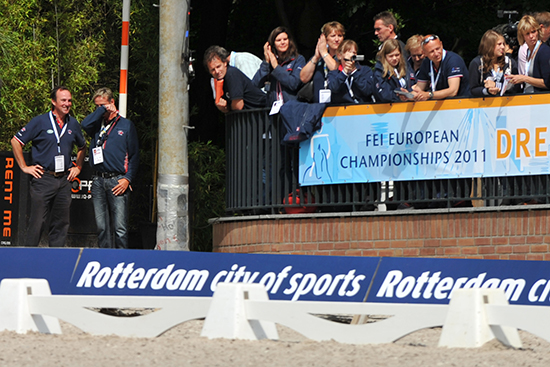 The Big MOMENT! Charlotte burst upon the world dressage stage at the 2011 European Championships, and her mentor is in a flood of tears. He really is a nice guy!
The Big MOMENT! Charlotte burst upon the world dressage stage at the 2011 European Championships, and her mentor is in a flood of tears. He really is a nice guy!
When did Charlotte come to you?
“Seven years ago now. She has always been a very tidy rider, coming from a showing background. She had a six-year-old horse she was producing, Fernandez and it wasn’t a very special horse, although it turned out to be a very good horse. At a selection class for potential future Grand Prix horses, the guys I was judging with said, “No, that’s not a Grand Prix horse” and I said, “Well it looks pretty sharp to me. It looks like it wants to work.” So I got on and thought, this is a damn nice horse.”
“Then Charlotte came up to me afterwards and asked if I would help her and I said, ‘No, I didn’t have time’. Then her mother rang me and chased me around for a bit and said, ‘Please help her. She always watches your dvds and she really wants to learn how to make a Grand Prix horse.’”
“So I rang her up, because one of my girls was going on holidays for 10 days, to see if she wanted to come and fill in; bring the horse and we’d have a look at it. She arrived and then never went home.”
“It’s good because I’ve helped her become a rider but I hope I’ve also guided her to having a successful career. She had to make the really big decision to sell Fernandez. It was a big risk for both of us because I rode Fernandez as well. Initially I said we will keep him in case one of our horses went lame, he would be a back up, because he could still be a team horse in this country. The trouble was, this was her future sitting here. I said to her, ‘You have no money, you need to get your foot on the property ladder and you have Valegro who I’ll leave with you until the Olympics and you have to think about it.’ And she did, and she sold him. I think it was really hard for her, but now she’s 26 years old and she’s got three gold medals and a house with no mortgage. That’s absolutely fantastic, and it’s a story that other people can cling onto.”
“I mean I don’t begrudge anyone whichever way you do it, none of us should do. If you’re born with lots of money, or somebody gives you lots of money or someone gives you a top horse, great. You still have to ride it and there’s an art in that. I didn’t pay Charlotte. I didn’t mind paying for her career, but I wasn’t paying her money as well. She had to go and earn it like me. I don’t take a wage out of the yard and I can’t pay her a wage out of the yard. We make the horses, and go earn money out of the teaching. Charlotte’s is at least a realistic story that anybody could say, that could be me.”
But it was the same as your story?
“Yes, originally it was my story. When I made it in England, it was certainly unusual, it was like an opening for more young people when I did it, and now Charlotte’s has really made a big opening.”
Yes but why did you make it when others didn’t?
“Well of course you get lucky, you get the opportunities. I just learnt the art of making a horse, I suppose. I think it’s always interesting being in the position I’m in now. I mean, I was a groom and I remember going for my interview and being asked, ‘How much money do you want,’ and I said, ‘Oh, I don’t want paying.’ Why did I say that? Because all I wanted to do was ride and I was worried if I said I wanted paying that I wouldn’t get the rides. That was the most important thing to me, to be able to ride. And then ‘What day off would you like?’ ‘Oh, I don’t want a day off. I just want to ride’.”
“That was my attitude as a young person. Now having role reversal, when I interview people, when somebody says to me, ‘How much do I get? What days do I get off?’ – that’s like an alarm bell. You can see it in people.”
“And Charlotte was the same when she came here. She just wanted to ride. And if I said, ‘Well, there’s only that’, then she would say, ‘Well then I’ll ride that.’
“Now she’s a princess! [he says jokingly] That’s where you could see it. It wasn’t like, ‘Oh look at Charlotte, she’s a gold medal type rider.’ I had no idea Charlotte was a gold medal type rider, but for the last few years, if Charlotte said to me, ‘What are you doing tomorrow?’ and I said, ‘Well I’ve got 11 lessons. I’m exhausted.’ And she would ask, ‘What time are you starting?’ and I’d say, ‘08:00’ then she’d say, ‘Right, I’ll be on at 07:00, can you teach me at 07:00?’”
“I wouldn’t say no to that. I was like, ‘Too bloody right and if you’re going to do it, then I’m getting up.’ So actually, I’d lost a bit of my drive, but Charlotte brought that out of me again because I had somebody to enjoy it with, somebody on the same level as me, somebody to go to shows with, somebody who knew my horse really well, and I knew what she was doing really well.”
Why is your training so successful?
“I don’t work so hard that I don’t have a life. Always remember that. Never get so busy making a living that you forget to make a life. I love that saying. It is so true. Both Uthopia and Valegro won their first Grand Prix at nine years old with 70%. That sounds like we have worked the horses hard, but that is absolutely not the case.”
“The difference is, we do four days a week. I think it’s about fittening, and these days they have off in between their schooling is what really gives them their ability to learn. Because it’s not pressure until they get tense and nervous, it’s just learn it, leave it, do it again. It’s always having the black and white process in place. No, that’s wrong; yes, this is right. I think my system is completely straight forward. I don’t have any tricks up my sleeve or anything like that. It’s just the basic way of balancing a horse, and I think when you’ve learnt to balance the horse, then you can get on with the difficult stuff.”
“I attribute my system to all the people I’ve met. I’ve trained with a lot of interesting people starting with Harry Boldt, who everyone in Australia will know. Harry was my first dressage teacher with Dr B when I was there. And it’s really funny, because people ask me what I’ve learnt from different trainers and actually I learnt really simple things.”
“All I learnt from Harry was half halt. I didn’t know what that was. I mean I had lessons for three and a half years and if you asked me what we did, I have no f….ing idea. I just know that’s all he used to say, “Half halt”. So in the end, I had to find out what it was because I didn’t know! I remember going around once and someone said ‘volte’, and I thought what the f@*&% is that? So, I kept going and they said, ‘volte’ and I kept going. I was too embarrassed to ask what a volte was. I mean, that is how raw and green I was. I did not know what all these things were.”
One of the big influences on Carl’s dressage career was Dr Wilfried Bechtolsheimer. It was Dr B’s stallion, Giorgione, that Carl rode at his first Olympics in Barcelona 1992. (Photo: Kit Houghton)
“Then when I left Dr B’s, I had to go to Holland to Bert Rutten, who is again a very old classical straight forward trainer and people ask, What did you learn from Bert? ‘On and back.’ That’s all he used to say, ‘On. Back.’ and then a huge puff of cigar smoke used to escape out the side of his mouth. So then I would ask, ‘Why do I have to do on and back all the time?’ and he said, ‘Because you need to get the horse to balance itself on four legs.’ Right, so then I knew what balance was and then I knew what self-carriage was.”
“The other big influence was Anne Van Olst. Anne is also one of my best friends. We met at the Olympics. She’s not been my trainer but she’s somebody that if I’m going into Europe, I’ll stay with her. I help her; she helps me. We both tell each other the truth.”
“One thing I’ve always struggled with is getting from piaffe to passage. I don’t know why. That is a little thing I always have a struggle with. Every horse I ride goes into it the same way…a little bit of piaffe, piaffe, piaffe…trot…and passage. I just cannot get the bloody hang of it. But whenever I go to Anne’s, she’s like, ‘That’s what we’ll work on. This is what you have to learn.’ And I help her to look nice! So we both work on each other’s weaknesses which is what I think real trainers should do with you, without de-moralising you. We’ve done 10 years of that together.”
“I think my system is a lot to do with lifestyle of the horses and how I feel they should be treated. I was an event rider before I was a dressage rider so I’m not afraid of all those things that I know a lot of people are. Probably not in Australia. I think Australia would be pretty much like we are. We hack our horses, we don’t keep them in barns and not let them see the light of day.”
“It was interesting because after the Olympics, one of the biggest questions I kept getting, mostly from Dutch and German magazines was, ‘Do you contribute your success to the fact that you turn your horses out?’ And I’m like, ‘No. I contribute our success to the fact that we train them the best we can.’ You wouldn’t go to an event rider and say did you win Badminton because you turned your bloody horse out into the field. They’d just laugh at you. People just do that over here.”
“My vet says to me and it always sticks in my mind, ‘The best way to keep your horse sound is to keep it moving.’ That’s such a simple piece of advice.”
“I have five staff for 18 horses so we can do it properly. When I decided to commit myself to these Olympics two years ago I thought, I’ve got the best two horses I’ve ever had and I need to dedicate my life to Charlotte, getting her going and to train her and her horse, and my horse and I want the right staff behind me. I don’t care if I come away out-of-pocket in two years. No yard makes money. Like I said, that’s why Charlotte and I can only ride four days a week, because we can’t take a wage. But I thought it was worth it to actually pay attention to detail.”
Hot horses v lazy horses?
“I’m prepared to have my hot horses living out, then I can work them without killing them through too much work. Lazy horses I don’t do. If a horse is lazy because he’s weak or immature, then that’s absolutely fine and we just wait for them to mature. If the horse has that inherent laziness in it, I wouldn’t bother. I don’t ever want to be in a position where I have to make a horse do it. For me the end result of dressage is that it has to be elegant and it has to be easy and it has to be a pleasure to watch and it should be in harmony. If it’s not; if I’m scrubbing away and shoving away on something, that’s not harmonious and I don’t enjoy it.”
Any more young riders coming through?
“I have a fantastic young rider called Samantha Thurman-Baker. She rode at the Junior Europeans last year and she was 10th but she won the prize for the most elegant rider. She is beautiful on a horse. She’s already trained her first horse to Grand Prix and won with 68% at one of our selection shows last year. So, training your own horse to a successful level of Grand Prix at 18 is pretty incredible. She works for me, she’s my second rider.”
“Katie Bailey is 21 and on the World Classes Equine Pathway Squad. I’ve got her riding Nip Tuck.”
Samantha Thurman-Baker and Spring Pascal. (Photo: Risto Aaltonen)
You give your young riders very good horses to ride instead of just keeping them all for yourself?
“I don’t feel like that about it. Like I’ve always said, if someone hadn’t given me the opportunity, I would be like every other talented rider. There are a lot of talented riders that never get a go. I just feel it’s my way of giving back to the sport really, especially British Dressage. It’s my way of trying to promote our country.”
“It actually gives me pleasure. I do enjoy watching other people ride my horses and I do think for my horses as well, it’s very good that they’re ridden by other people and I can just hop on and polish them up and do my thing. I also know that the best way of learning is by feel.”
“At the end of the day, you know everyone’s going to move on and leave you and make their own career at some point. That’s life. But I hope they go having had a lot of good opportunities.”
Generally, you always buy young horses?
“Absolutely. I think the only way for a professional like myself to do it is two year olds. I’m buying horses for a few thousand euros and therefore for me if they make it, that’s all fantastic; it’s been a great journey. And if they don’t, I make them into something where I don’t lose a lot of money. Valegro and a lot of the horses here have been unbroken horses when we bought them. People say, ‘Oh you must have a really good eye for young horses’ because we’ve got a lot of good ones, but I still think it’s the training. I don’t look for the flashiest mover or anything, I just look for a great hind leg and a nice physique and the rest is training the temperament. And we’ve only had one horse out of the whole batch we’ve had that has been an unrideable one. Everything else has made it, in one form or another, into a decent horse.”
“I’m always reminding Charlotte… you are a mug if you think that the more you spend, the better you get. Don’t, whatever you do, fall into that category because that’s very often a dangerous route.”
“It’s the same with trainers. I also teach a lot of people, or I have, who want a lot of help. And I say, what I can tell you for this amount of money, someone down the road could tell you for half the price. You don’t need me to teach you every week. You just need somebody who has a bit of an eye and is honest with you and spend half the money. Come back to me every three months or something and we’ll have a look at your progress overall.”
And you have an exciting new colt…
“Out of Valegro’s full sister by Uthopia. It has to be the best bred horse in the world, surely! It’ll probably be useless! [laughs] It probably won’t move or be ugly or something. No he’s not ugly, but he’s big. He’s coming two….a black colt. I’m sending him, Euphoria, to Holland for the grading this year so I’m going to see what they say.”
“The same mare also has a yearling by Lord Leatherdale who looks pretty special and she’s about to drop one by Dimaggio, the former young horse world champion.”
“So, we’re having a little bit of a laugh with the breeding, see what we can do. I know it’s a mug’s game but we’re just having a bit of fun.”
There’s been a lot of talk since the Olympics that now dressage has changed with you Brits on top now; the training methods and judging are changing. Do you agree?
“Yeah…interesting. I think it has. I think it has definitely helped get away from forms of riding that people don’t like to watch. Charlotte, Laura and myself are very straight forward riders with a system that involves just getting the horse balanced and on the bit. It’s still not perfect, but I don’t think anyone will ever be perfect.”
“People want to do what the winners do, I mean let’s face it, if you know you’re going to be a winner and be successful, you’re going to be a role model. There are going to be a majority of people who will never change their ways, but there’s going to be a bigger majority that want to know what you do, why you do it and would it work for them.”
“You just see it in press statements sometimes. Like Adelinde, suddenly she’s working on lightness. Adelinde’s never said that before, but she knows that’s what the judges said last year. Even she in a way has admitted in the press that she is doing what the winners do.”
“So yeah, I think it will be beneficial for horses.”
And you’re coming to Sydney for Equitana later in the year?
“Oh I’m thrilled about that [and there’s that Aussie accent again] Jesus, I live in a bloody grey country! You know what the biggest draw is? Going somewhere I can have a bit of sun in November, have fun with the Aussies, take the piss out of them and have them take the piss out of me and all that goes on; see all the people I love.”
“I have to say, I didn’t think that I would ever make it to the top because people used to ask me, ‘What’s it like being an international rider?’ and I used to say, ‘You know what, it’s really great fun being at the bottom because all the people at the bottom are fun.’ Whenever we used to go to the Olympics, it always used to be the Australians and the British so I’m not being rude here but we were all at the bottom together and I used to say they’re the fun people. The ones at the top are bloody difficult to get on with. And it always stuck with me and I thought when we won our first medal at Windsor in 2009, I just had that in my head and I thought, ‘I must be nice! Whatever happens!’”
“The good thing is, and I think it’s the same with Charlotte, having been at the bottom, I know what it takes. There are a lot of great fun riders out there in Australia. We do have a laugh.”
This article first appeared in the June 2013 issue of THM.




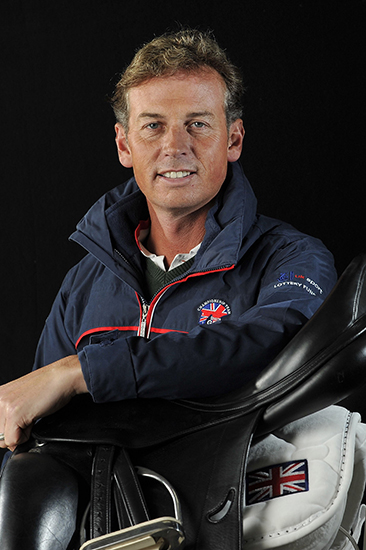
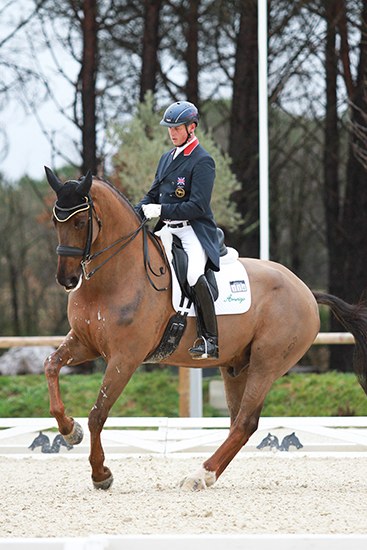
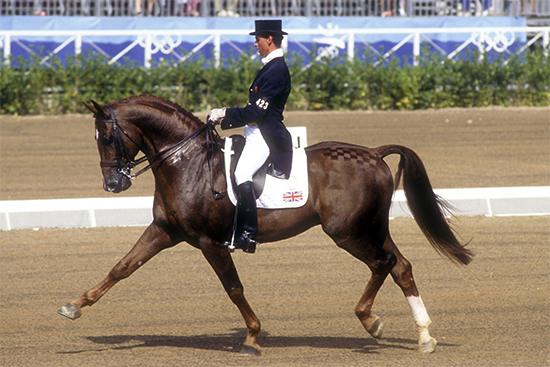
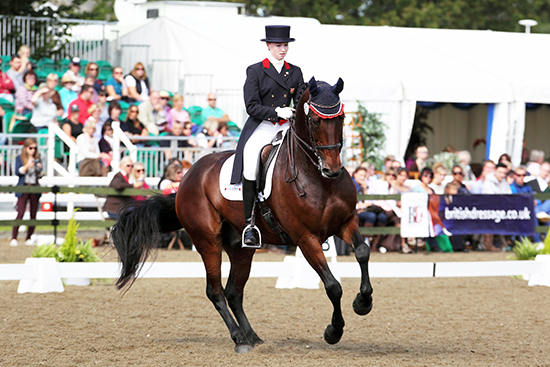
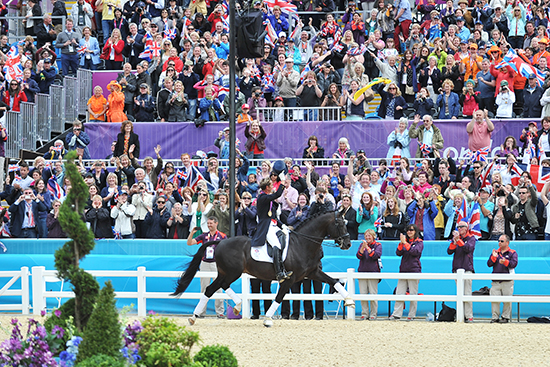
I have read some just right stuff here. Certainly worth bookmarking for
revisiting. I wonder how so much attempt you put to create this type of magnificent informative web site.